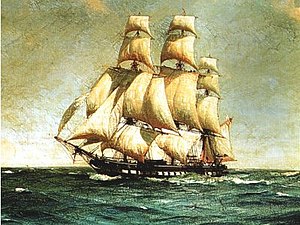LOST TREASURES STILL TO BE DISCOVERED:

HMS LUTINE, SUNK DURING AN AUTUMN STORM ON THE DUTCH COAST, NEAR THE ISLAND OF VLIELAND. THE FREGAT CARRIED GOLD AND SILVER TO PAY THE BRITISH ALLIES IN GERMANY. PART OF THE ROYAL TREASURE WERE ON BOARD AS WELL. OFFICIALLY, NOTHING MUCH HAS BEEN FOUND, THE SHIPWRECK WAS ACCESSIBLE IN THE YEARS IMMEDIATELY AFTER THE DISASTER. THEN THE WRECKAGE DISAPPEARED UNDER SANDS OF THE “WADDENZEE”.
MABY SOME OF THE CONTENT OF THE LUTINE COULD HAVE BEEN LOOTED. ANONYMOUS TALES POINT AT PE.RSONS OR FAMILIES ON THE ISLAND, WHO SUDDENLY BECAME
RICH IN THE YEARS AFTER THE VESSEL STRANDED
Lutine was a frigate which served in both the French Navy and the Royal Navy. She was launched by the French in 1779. The ship passed to British control in 1793 and was taken into service as HMS Lutine. She sank among the West Frisian Islands during a storm in 1799.
She was built as a French Magicienne-class frigate with 32 guns, and was launched at Toulon in 1779. During the French Revolution, Lutine came under French Royalist control. On 18 December 1793, she was one of sixteen ships handed over to a British fleet at the end of the Siege of Toulon, to prevent her being captured by the French Republicans. In 1795, she was rebuilt by the British as a fifth-rate frigate with 38 guns. She served thereafter in the North Sea, where she was part of the blockade of Amsterdam.
Lutine sank during a storm at Vlieland in the West Frisian Islands on 9 October 1799, whilst carrying a large shipment of gold. Shifting sandbanks disrupted salvage attempts, and the majority of the cargo has never been recovered. Lloyd's of London has preserved her salvaged bell – the Lutine Bell – which is now used for ceremonial purposes at their headquarters in London. The employees rang the famous bell, when they heard, that the BISMARCK was sunk.

Geen opmerkingen:
Een reactie posten